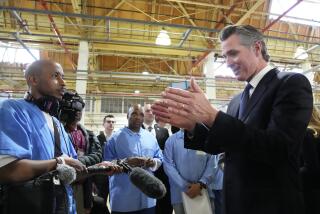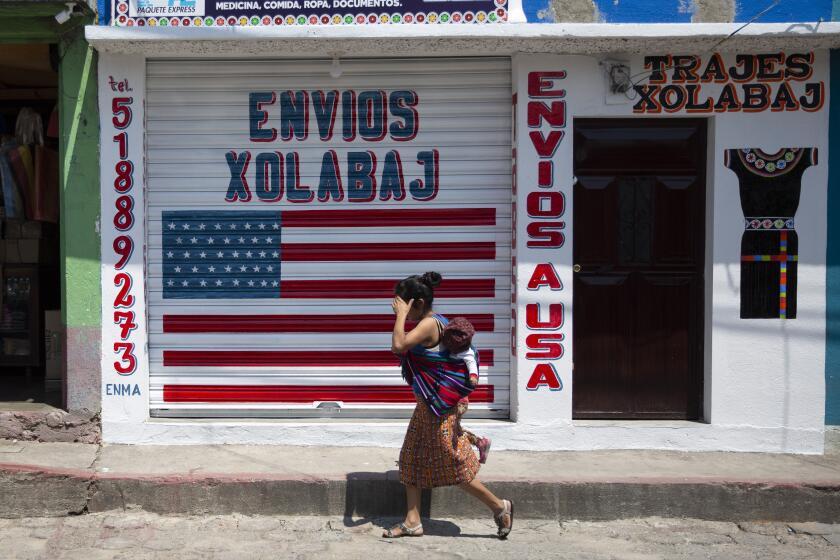Crime or punishment
- Share via
SACRAMENTO lawmakers are in a trap. U.S. District Judge Lawrence Karlton will decide in little more than three months whether to set a population cap on the state’s vastly overcrowded prison system, potentially forcing the early release of thousands of convicted criminals. To keep the court at bay, Gov. Arnold Schwarzenegger has asked the Legislature to approve billions in new prison construction money, and to consider revising sentencing and parole laws to put fewer criminals behind bars.
The trap is this: California voters want criminals locked up, as they demonstrated again last year when they overwhelmingly passed an initiative that toughened sentences for sex offenders. So they’re generally against loosening the sentencing laws. But at the same time, they also oppose spending any more of the state’s tax money to build more prisons, according to polls.
So what are legislators to do? The enormity of the prison system’s ills makes inaction no longer viable. Prison facilities are packed to twice their intended capacity, California has the country’s highest recidivism rate, and the $8-billion corrections budget is already the third-largest spending category. Failure to take action will probably mean a takeover of the prison system by the courts.
Crime has long been the most dangerous third rail in California politics. The 1993 abduction and murder of 12-year-old Polly Klaas by a repeat felon triggered a wave of public fear and anger. The following year, the “three strikes” law, mandating a 25-years-to-life sentence for a third felony conviction, overwhelming passed.
Lately, there have been some small indications that attitudes might be changing, and that voters might be willing to rethink their views. Crime statewide is down -- so perhaps the sentencing reform won’t seem quite so scary -- and support for more prison spending is growing, though it remains a distinctly minority view.
A survey last month by the nonpartisan Public Policy Institute of California survey found that just 34% of the public support more prison funding, with nearly two-thirds opposing it. And even if the state received unexpected revenue, 57% of likely voters would still oppose spending the money on prison construction. But the survey also indicated a shift in attitudes. Respondents were asked whether state funding on prisons should be increased, remain the same or be cut. Roughly one-third of likely voters fell into each category. That’s a significant change from, say, January 2005, when the survey found that just 13% of voters supported an increase in prison spending and nearly half favored a cut in the prison budget.
Less encouraging for politicians is the fact that the survey data indicate that the key swing-voter groups in California are most opposed to new prison spending. Independent voters, a rising category, are more likely to oppose the idea than either Democrats or Republicans.
And while opposition to more money for prisons crossed nearly every demographic category, the most negative findings were from middle- and upper-income households and from those in the San Francisco Bay Area. By contrast, the issue was nearly divided in Los Angeles, as it was among Latinos and lower-income households.
Lawmakers appear frozen by a cynical political calculation. They could step onto the third rail by approving a plan that would boost prison spending and reconsider criminal sentences for nonviolent criminals. Or they could allow the crisis to escalate by doing nothing, and then try to blame a federal judge for it.
“Some ... have suggested to me, ‘Just let the governor do it,’ ” state Sen. Gloria Romero (D-Los Angeles) said at a recent news conference. “Sit back and wait. Others have said, ‘Just let the courts do it.’ I reject both of those approaches.”
In December, Romero joined Schwarzenegger to announce an $11-billion plan to expand the bed capacity of the corrections system by building more prisons and to create a commission that would consider new sentencing laws.
*
BUT THE TIME and political capital the governor wants to spend on universal healthcare, new public works projects and political reform, among other initiatives, may leave little to invest in fixing the corrections system. And the same goes for the Legislature, which last year rejected Schwarzenegger’s $9-billion proposal to build more prisons.
The solution to the political crisis will take a public education campaign to remind voters that overhauling the state’s criminal justice system by building more prisons and redoing sentencing and parole laws is a tough-on-crime position. The new money is not being spent to coddle criminals. Also, to reject an overhaul is to put public safety at greater risk.
The growing public support for more funding of prisons suggests that voters are increasingly aware of the financial cost of the tough-on-crime policies they support.
National polls also indicate that voters recognize that a lack of rehabilitation programs will make crime worse. More than 60% of respondents in a Zogby poll last year said it was “very important” that inmates released from prison have access to job training, mental health services, mentoring and family assistance.
The last year in Sacramento was widely described as one of the most productive in years because Schwarzenegger and the Legislature set aside political differences to achieve bipartisan compromises on several major issues. So far this year, the political mood in the Capitol seems to be more conducive to compromise than stalemate.
The prison crisis is a crucial test for government. If it’s not addressed and dangerous criminals are released, politicians will deserve the outrage from a public that was just starting to think things had gotten better.
More to Read
Get the L.A. Times Politics newsletter
Deeply reported insights into legislation, politics and policy from Sacramento, Washington and beyond. In your inbox twice per week.
You may occasionally receive promotional content from the Los Angeles Times.










